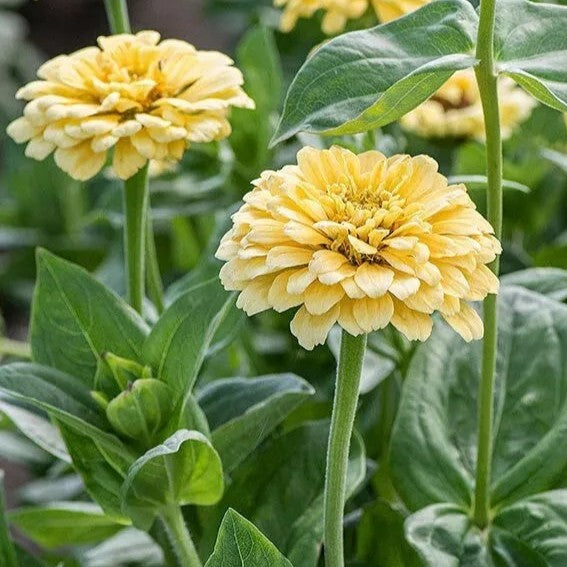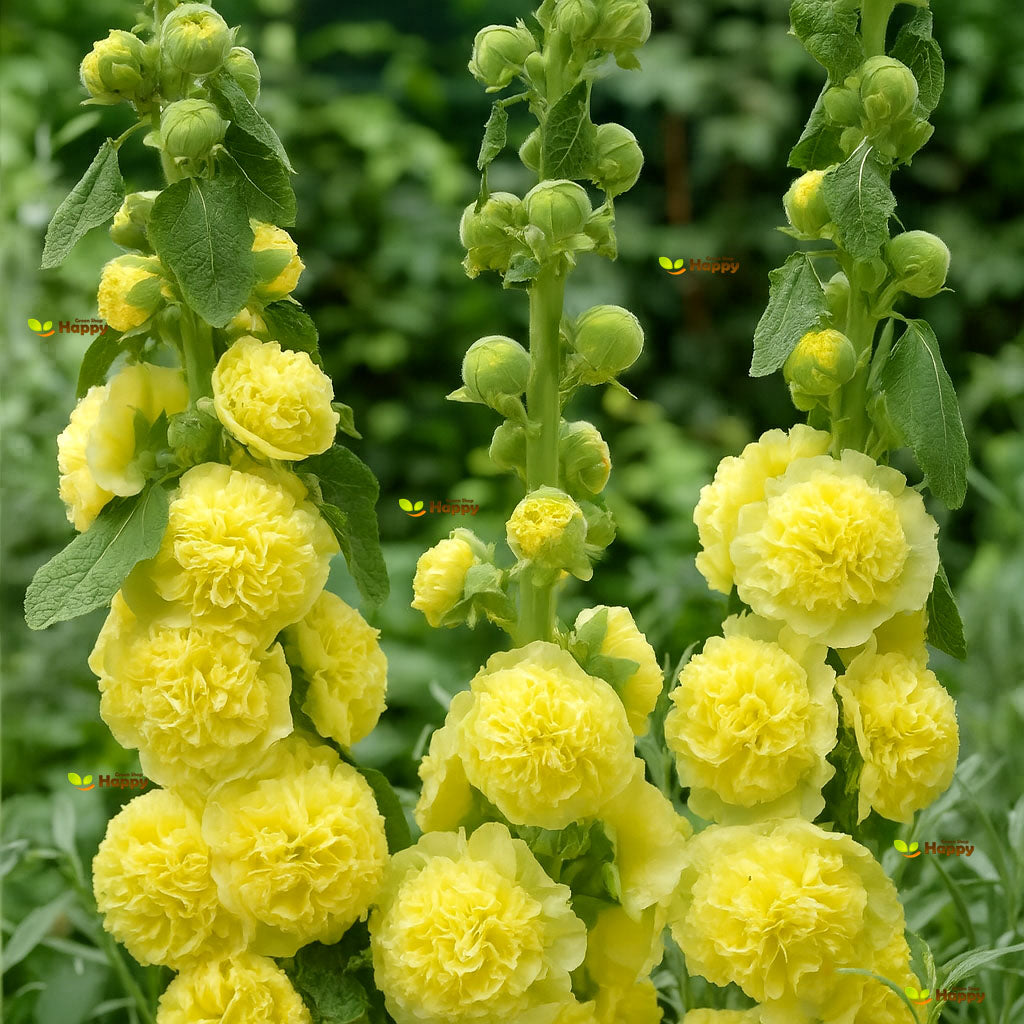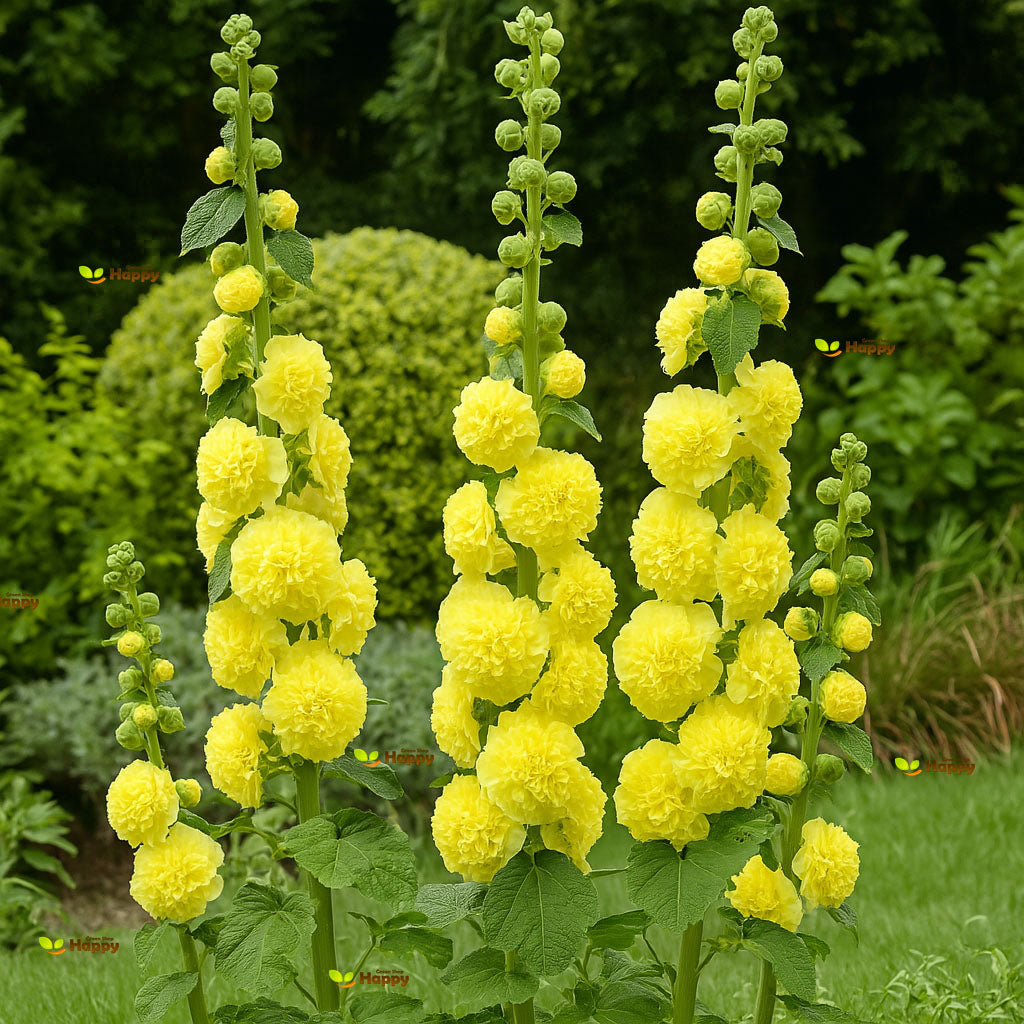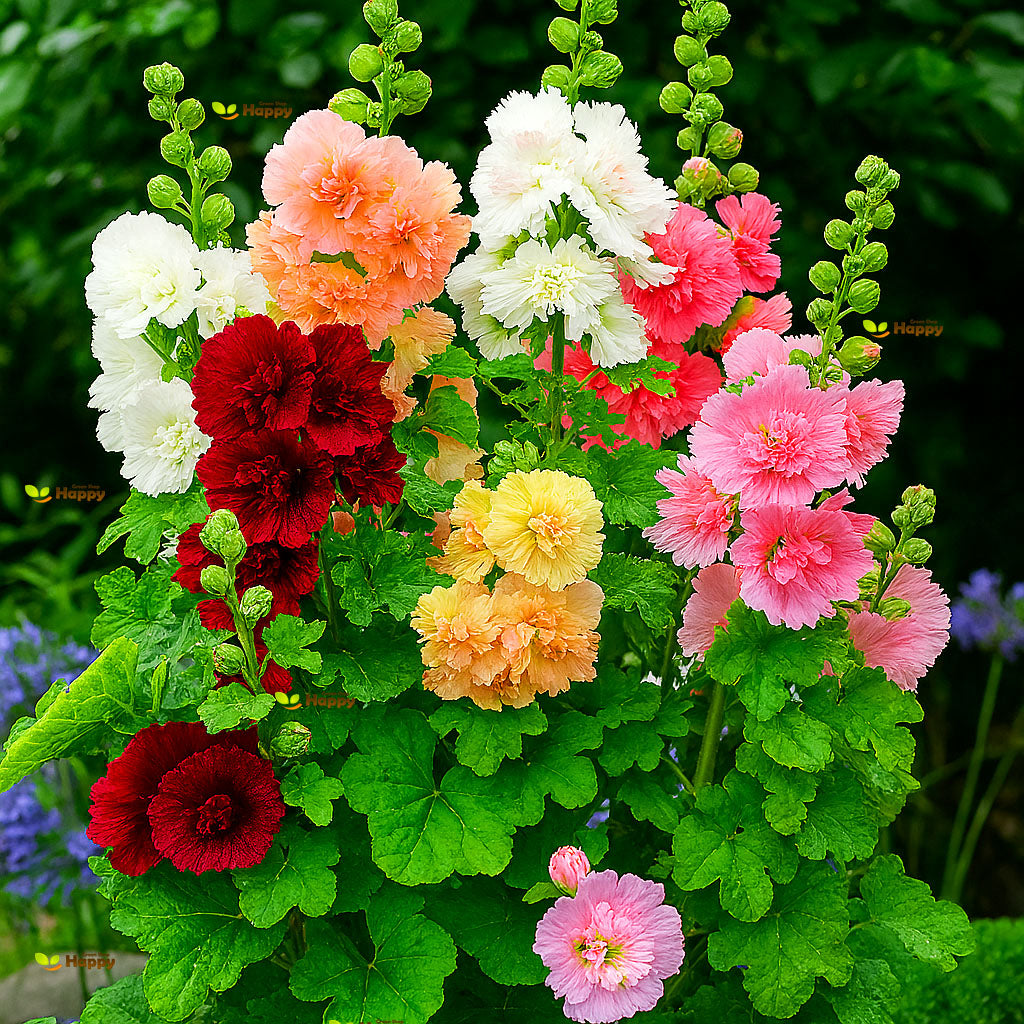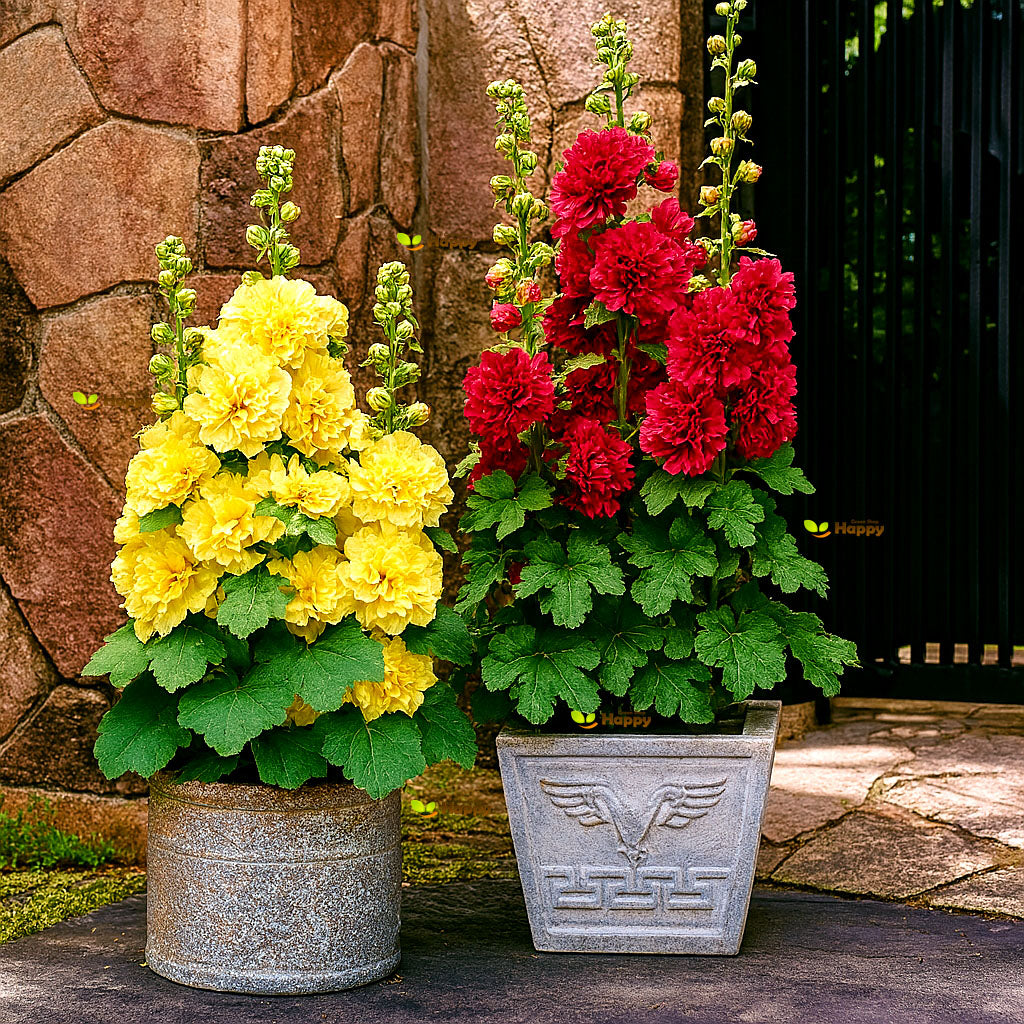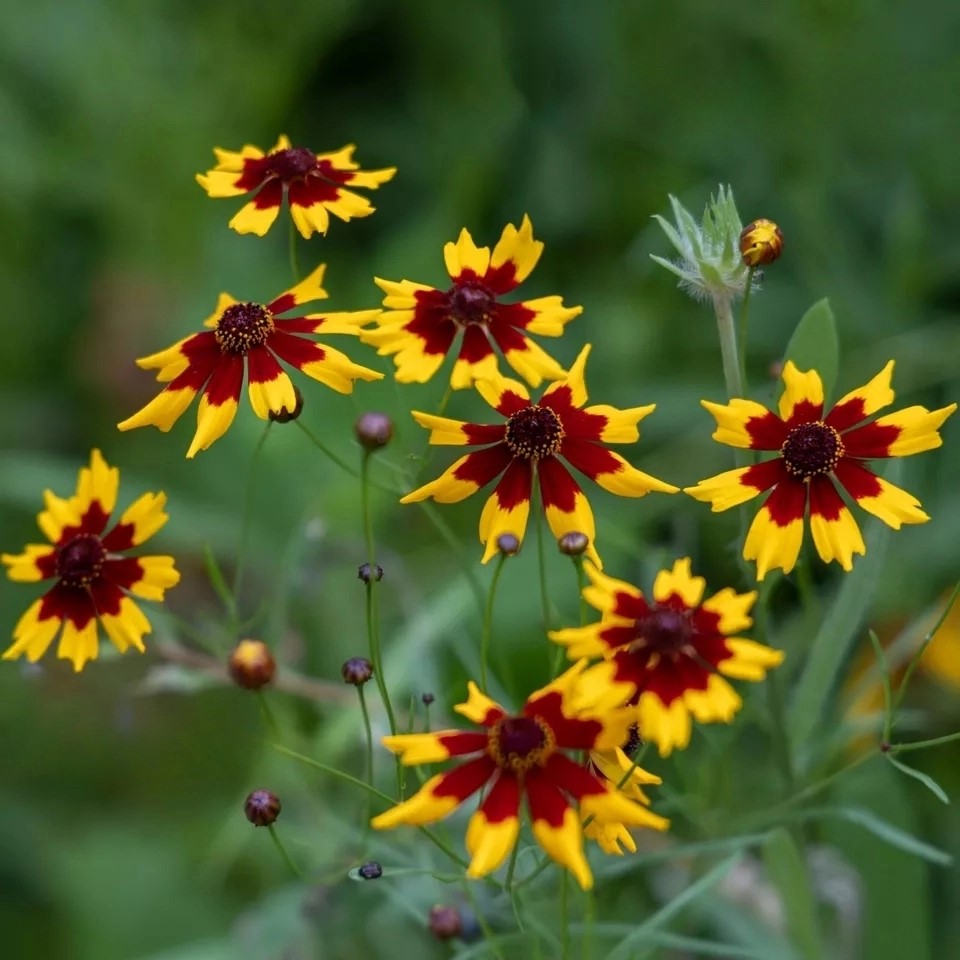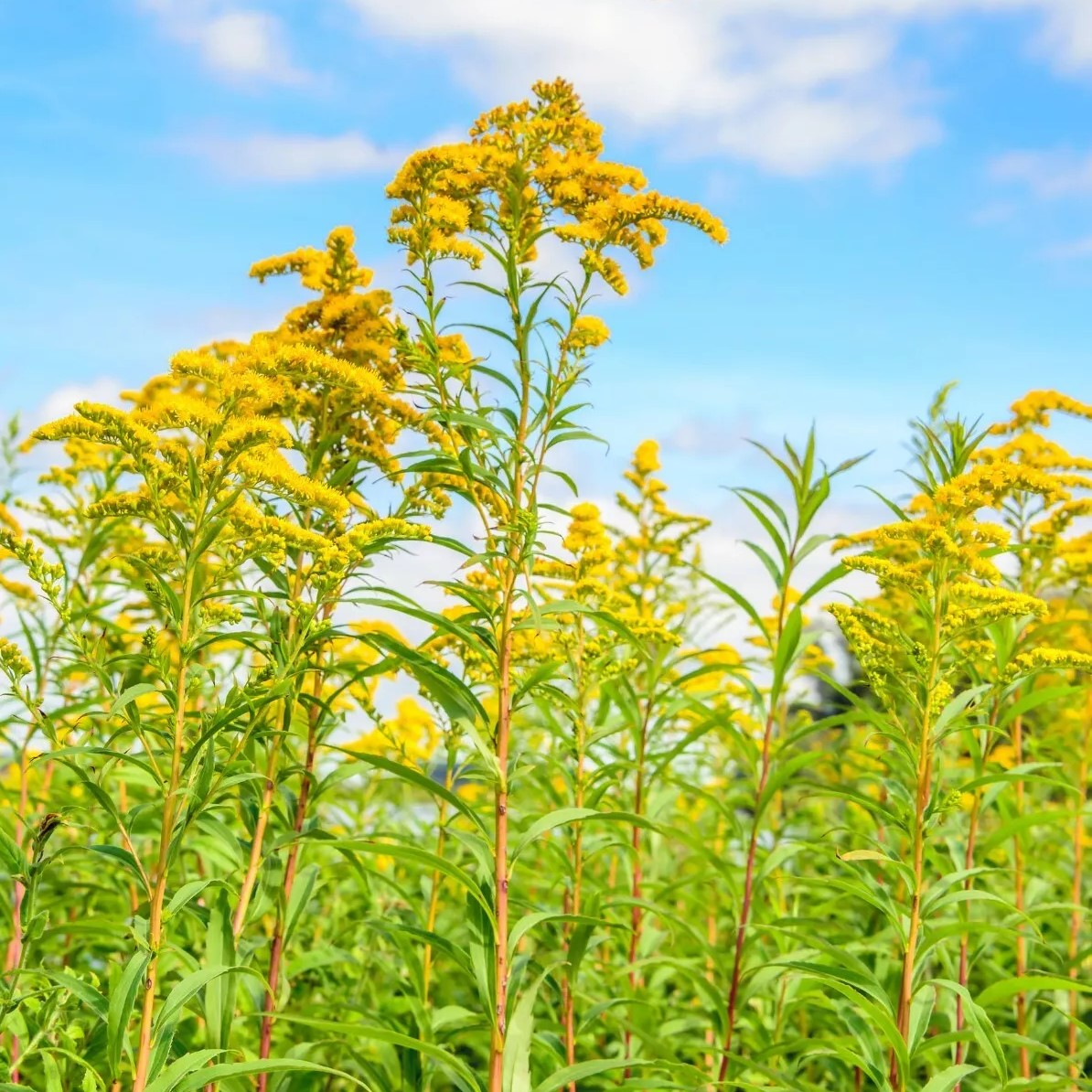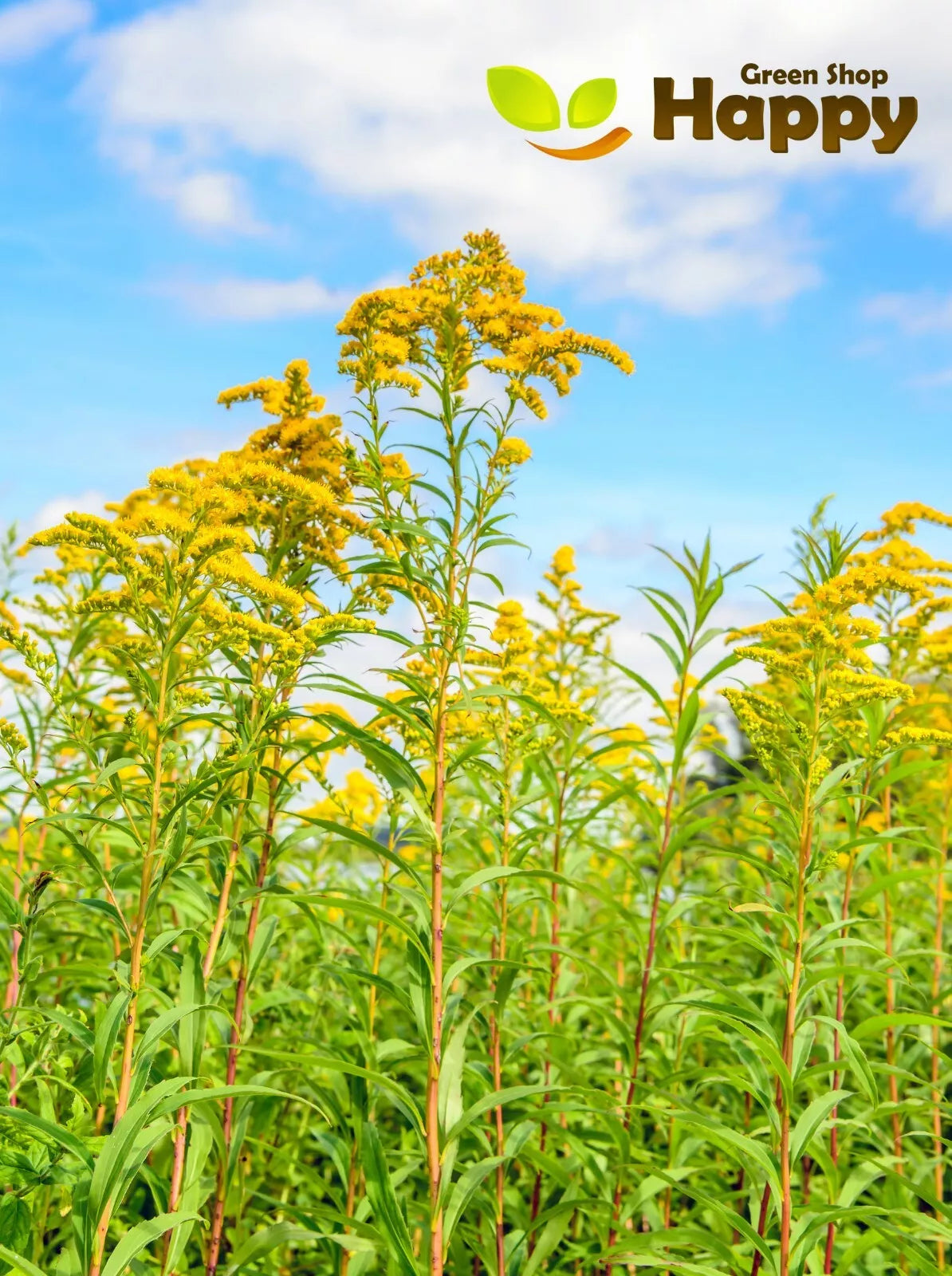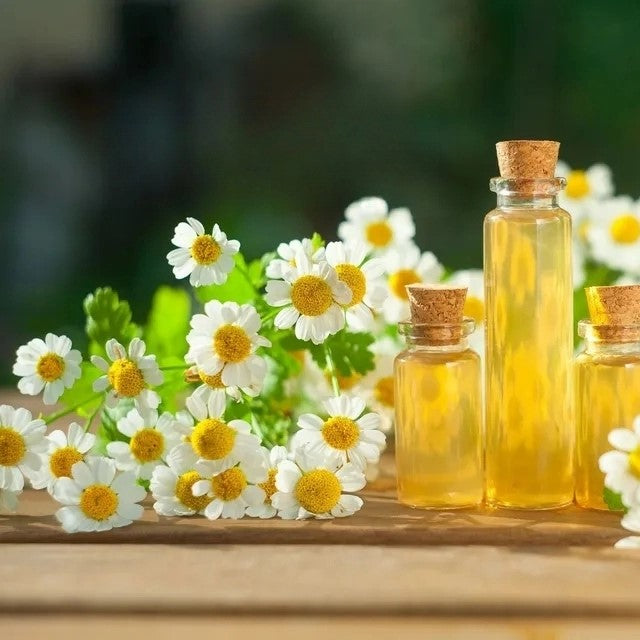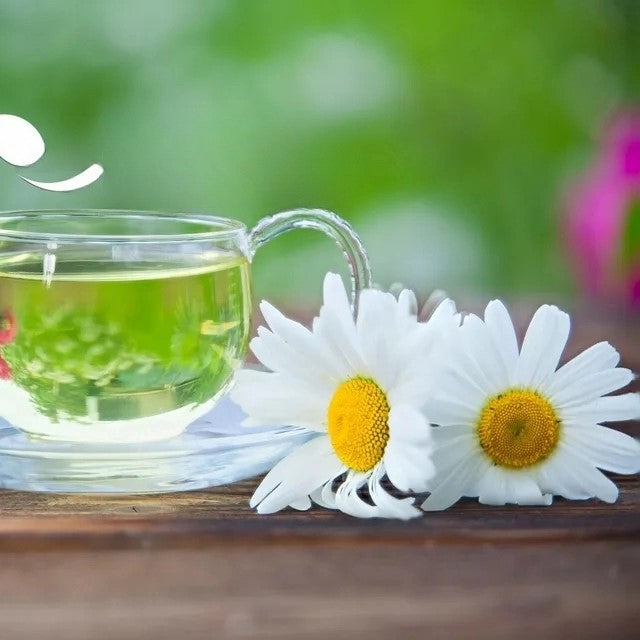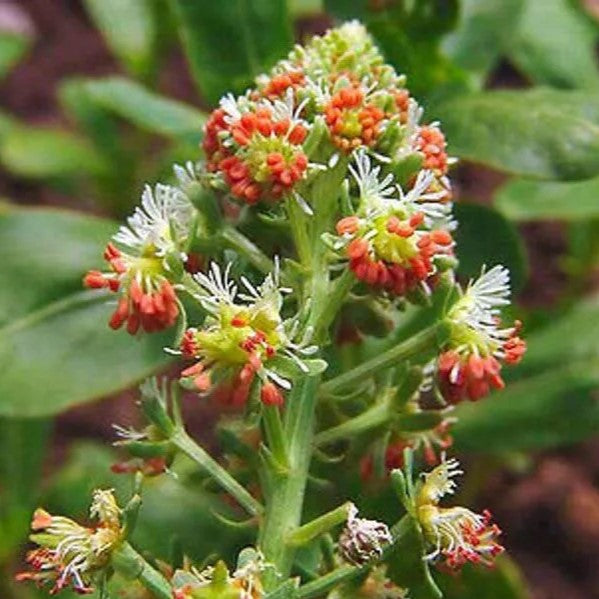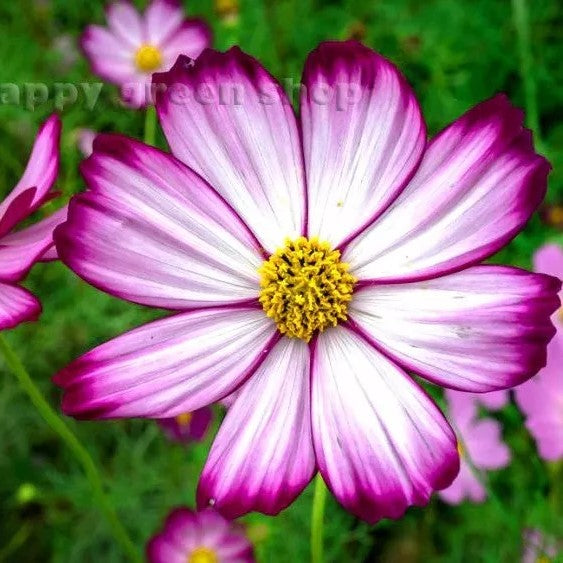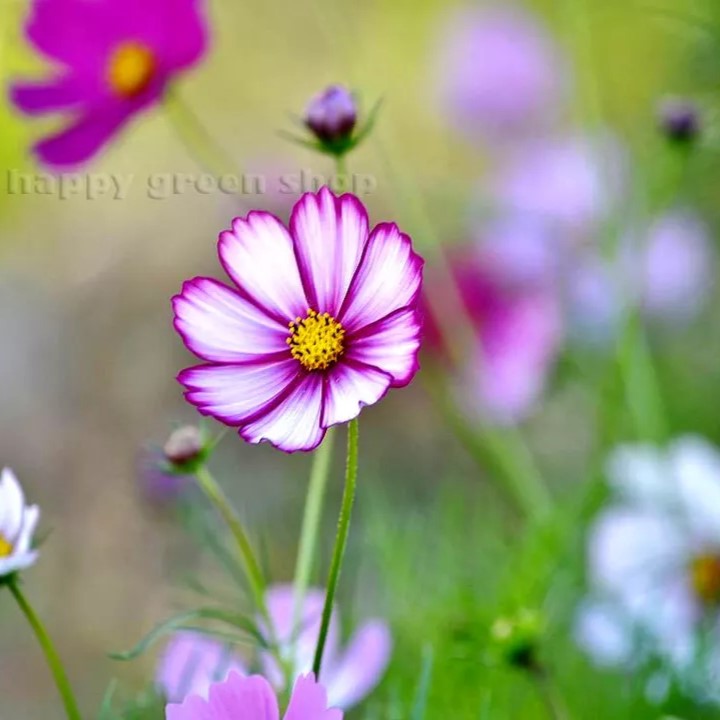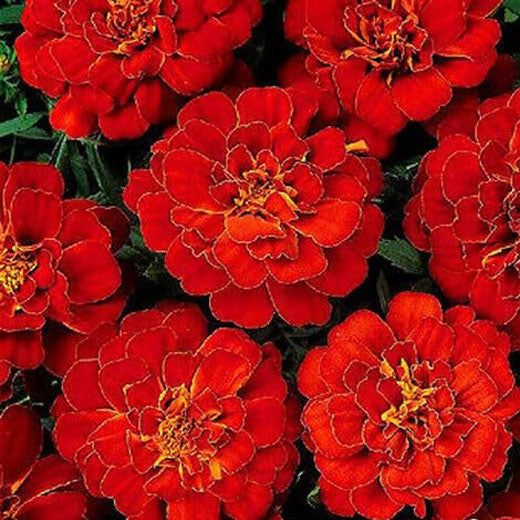Sort by:
180 products
180 products
HOLLYHOCK ‘CHATERS DOUBLE YELLOW’ SEEDS (Althaea rosea)
Add towering elegance and cheerful color to your garden with Hollyhock ‘Chaters Double Yellow’. This classic biennial produces large, double yellow flowers on tall, sturdy stems, creating a stunning vertical display in borders and cottage gardens. Easy to grow and long-flowering, it attracts pollinators while enhancing garden charm.
Why Grow "Chaters Double Yellow"
-
Large, double yellow flowers
-
Tall, sturdy stems for vertical impact
-
Long-flowering and low-maintenance
-
Attracts bees and butterflies
Key Features
-
Type: Biennial (Althaea rosea)
-
Height: 150–200 cm
-
Flowering: Summer (June–August)
-
Position: Full sun
-
Uses: Borders, cottage gardens, tall displays, pollinator-friendly
Ideal For
-
Adding height and color to garden borders
-
Cottage and informal garden designs
-
Attracting pollinators
-
Cut flowers for arrangements
Sowing & Growing
-
Sow indoors: 6–8 weeks before last frost
-
Sow outdoors: After frost danger has passed
-
Germination: 14–21 days
-
Space seedlings: 40–50 cm apart
-
Full sun and well-drained soil for best flowering
Hollyhock ‘Majorette Double’ Mix – Seeds (Althaea rosea)
The Hollyhock ‘Majorette Double’ Mix is a stunning dwarf variety producing fully double flowers in a wide range of colors, including pink, red, yellow, and white. Compact and bushy, it is perfect for smaller gardens, borders, and containers while still giving that classic cottage garden charm.
Why Grow ‘Majorette Double’?
-
Fully double blooms in a vibrant color mix
-
Shorter, dwarf habit compared to traditional tall hollyhocks
-
Long summer flowering season
-
Attracts bees and pollinators
Key Features
-
Type: Half-hardy biennial (often flowers in the first year)
-
Height: 60–80 cm
-
Flowering: June–September
-
Position: Full sun, well-drained soil
-
Uses: Borders, containers, cottage garden plantings
Ideal For
-
Smaller gardens and courtyards
-
Adding vertical interest without excessive height
-
Pollinator-friendly spaces
Sowing & Growing
-
Sow indoors: February–April in trays or pots
-
Sow outdoors: May–June directly in soil
-
Germination: 14–21 days at 18–20°C
-
Transplant seedlings 40–50 cm apart
-
Deadhead faded flowers for extended blooming
Golden-Crown Coreopsis – Seeds (Coreopsis basalis)
Golden-Crown Coreopsis (Coreopsis basalis) is a vibrant annual with bright yellow, daisy-like flowers featuring a contrasting golden-orange center. It blooms profusely from early summer to autumn, attracting bees and butterflies. Easy to grow and drought-tolerant, it’s perfect for borders, wildflower gardens, and pollinator-friendly plantings.
Why Grow "Golden-Crown Coreopsis"
-
Bright yellow flowers with golden-orange centers
-
Long flowering season from summer to autumn
-
Attracts bees and butterflies
-
Easy to grow and drought-tolerant
Key Features
-
Type: Annual (Coreopsis basalis)
-
Height: 30–50 cm
-
Flowering: June–October
-
Position: Full sun
-
Uses: Borders, wildflower gardens, pollinator-friendly gardens, cut flowers
Ideal For
-
Pollinator gardens and wildflower meadows
-
Summer borders and bedding
-
Cut flower arrangements
-
Low-maintenance sunny spots
Sowing & Growing
-
Sow outdoors: March–May in prepared soil
-
Germination: 10–20 days at 18–22°C
-
Thin seedlings to 25–30 cm apart
-
Prefers full sun and well-drained soil
-
Deadhead to encourage prolonged flowering
Golden Rod ‘Yellow Springs’ – 2000 Seeds (Solidago canadensis)
The Golden Rod ‘Yellow Springs’ is a hardy perennial that produces tall spikes of tiny golden-yellow flowers, creating a striking late-summer display. A magnet for bees and butterflies, it’s ideal for naturalistic gardens, meadows, and wildlife-friendly plantings. Easy to grow, drought-tolerant, and low-maintenance.
Why Grow ‘Yellow Springs’?
-
Tall, elegant spires of golden-yellow blooms
-
Attracts pollinators and supports biodiversity
-
Drought-tolerant and hardy perennial
-
Excellent for cut flowers and meadow planting
Key Features
-
Type: Perennial
-
Height: 100–150 cm
-
Flowering: July–September
-
Position: Full sun, well-drained soil
-
Uses: Borders, wildflower gardens, meadows, cut flowers
Ideal For
-
Pollinator-friendly gardens
-
Naturalized meadow plantings
-
Adding vertical height and late-season color
Sowing & Growing
-
Sow indoors: February–April, lightly cover seeds
-
Sow outdoors: April–June in prepared soil
-
Germination: 14–21 days at 18–22°C
-
Thin or transplant seedlings 30–40 cm apart
-
Cut back in autumn after flowering
German Chamomile – Seeds (Matricaria recutita)
Bring calm and fragrance to your garden with German Chamomile, a charming annual herb prized for its daisy-like white flowers and soothing aroma. Traditionally used for herbal teas and natural remedies, this variety is easy to grow, highly productive, and also attracts pollinators to your garden. A perfect choice for herb beds, borders, and pots.
How to Grow
. Sow indoors from February to April, lightly pressing seeds onto the surface of moist compost – do not cover as they need light to germinate
. Transplant seedlings outdoors after the last frost, spacing 20–25 cm apart
. Alternatively, sow outdoors directly in April to May in well-drained soil
. Prefers a sunny position with average to light soil
. Water sparingly, as chamomile thrives in slightly dry conditions
Key Features
. Delicate white blooms with yellow centers
. Traditional herb for calming teas and remedies
. Attracts bees, butterflies, and beneficial insects
. Easy to grow, tolerant of poor soils
. Ideal for borders, herb gardens, and containers
Ideal For
. Herbal tea lovers and home remedies
. Pollinator-friendly gardens
. Cottage gardens and borders
. Container growing
Sowing & Harvest
. Sow: February – May
. Harvest: June – September
Quick Tip
Harvest flowers on warm, dry days and dry them for homemade chamomile tea with the best flavor and aroma.
Garden Mignonette – Seeds (Reseda odorata)
The Garden Mignonette is a charming old-fashioned flower grown not for showy blooms but for its sweet, clove-like fragrance that fills the summer garden. Its delicate greenish-cream flowers may be modest in appearance, but they are highly attractive to bees, butterflies, and pollinators. A favorite for cottage gardens and scented corners, Garden Mignonette has been cherished for centuries as a fragrance plant.
What Makes It Special
-
Grown primarily for its intensely sweet fragrance
-
A heritage cottage-garden favorite
-
Long-lasting cut flower for fragrant indoor arrangements
-
Pollinator-friendly, attracting bees and butterflies
Key Features
-
Botanical name: Reseda odorata
-
Common name: Garden Mignonette
-
Seed count: Approx. seeds per pack
-
Height/Spread: 30–60 cm tall, 20–30 cm spread
-
Position: Full sun to light shade; prefers well-drained soil
-
Flowering period: Summer (June–September)
Ideal For
-
Scented cottage gardens
-
Flower borders and edges
-
Cut flower arrangements
-
Wildlife-friendly planting
Sowing Instructions
-
When to sow: March–May outdoors directly into the soil, or August–September for overwintering
-
How to sow:
-
Sow thinly in drills 0.5 cm deep in prepared soil
-
Thin seedlings to 20 cm apart once established
-
-
Care:
-
Prefers poor to moderately fertile soil (too rich reduces fragrance)
-
Water moderately and avoid overfeeding
-
Garden Cosmos ‘Picotee’ – Seeds (Cosmos bipinnatus)
Garden Cosmos ‘Picotee’ (Cosmos bipinnatus) is an elegant annual producing daisy-like flowers with delicate contrasting edges in shades of white, pink, and magenta. Its tall, airy stems create a graceful, meadow-like effect, making it perfect for borders, cottage gardens, and cutting gardens. Easy to grow and long-flowering, it also attracts pollinators such as bees and butterflies.
Why Grow "Picotee"
-
Striking flowers with contrasting colored edges
-
Tall, airy stems for a graceful, meadow-like display
-
Long flowering season from summer to autumn
-
Attracts pollinators
Key Features
-
Type: Annual (Cosmos bipinnatus)
-
Height: 80–120 cm
-
Flowering: July–October
-
Position: Full sun
-
Uses: Borders, cottage gardens, cutting gardens, pollinator-friendly planting
Ideal For
-
Cottage and wildflower-style gardens
-
Tall border displays
-
Cutting gardens for bouquets
-
Pollinator-friendly garden spaces
Sowing & Growing
-
Sow outdoors: April–June directly in prepared soil
-
Germination: 7–14 days at 18–22°C
-
Thin seedlings to 30–40 cm apart
-
Prefers full sun and well-drained soil
-
Deadhead to prolong flowering
French Marigold Double 'Brocade Red' – 350 Seeds (Tagetes patula nana)
Bring bold, fiery color to your summer displays with French Marigold Double 'Brocade Red'. This compact dwarf variety produces masses of fully double, richly ruffled blooms in glowing scarlet-red shades. The continuous flowering habit makes it a favorite for bedding, edging, pots, and window boxes. Easy to grow and low maintenance, it also helps deter pests in the garden.
Why Grow 'Brocade Red'
-
Double blooms in striking scarlet-red tones
-
Compact, bushy growth – perfect for edging and containers
-
Long-lasting summer color
-
Naturally pest-repelling companion plant
Key Features
-
Type: Half-hardy annual (Tagetes patula nana)
-
Height: 20–25 cm
-
Flowering: June–October
-
Position: Full sun
-
Uses: Beds, borders, edging, patio pots, containers
Ideal For
-
Creating vibrant bedding displays
-
Patio pots and balcony containers
-
Edging garden paths and borders
-
Companion planting with vegetables
Sowing & Growing
-
Sow indoors: March–April in trays or pots, lightly covering seed
-
Sow outdoors: May, directly where they are to flower
-
Germination: 7–14 days at 18–22°C
-
Plant spacing: 20 cm apart
-
Thrives in sunny, well-drained soil
French Marigold ‘Petite Orange’ – Seeds
(Tagetes patula nana) – Compact Orange Marigold
French Marigold ‘Petite Orange’ is a dwarf, early-flowering marigold variety producing masses of bright orange blooms on compact, bushy plants. It’s perfect for borders, edging, rockeries, and containers, offering continuous color throughout summer until the first frost.
Key Features
-
Type: Annual
-
Height: 20–25 cm
-
Flowering: June–October
-
Color: Bright orange
-
Special: Compact habit, long flowering, easy to grow
Ideal For
-
Bedding and border planting
-
Pots, containers, and window boxes
-
Edging and rock gardens
-
Companion planting with vegetables (repels pests)
Sowing & Growing
-
Sow indoors: March–April
-
Transplant outdoors: After frost
-
Spacing: 20–25 cm
-
Soil: Well-drained, moderately fertile soil
-
Sunlight: Full sun
Care Tips
-
Remove spent flowers to encourage continuous blooms.
-
Water regularly but avoid waterlogging.
-
Tolerates heat and dry conditions well.
Showing 108/180




